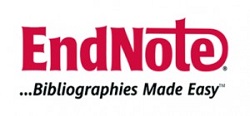LOGIN/REGISTER FOCUS AND SCOPE EDITORIAL TEAM REVIEWERS AUTHOR GUIDELINES MANUSCRIPT TEMPLATE PEER REVIEW PROCESS PUBLICATION ETHICS OPEN ACCESSS POLICY PLAGIARISM POLICY CORRECTION & RETRACTION POLICY PUBLICATION FEES
Author Guidelines
Before submission, please ensure your paper is prepared using the journal template (download template). This will ensure fast processing and publication. Any papers not fulfilling the requirements based on our template will not be processed.
Please read our author guidelines and plagiarism policy, or your manuscript will be rejected automatically.
AUTHOR GUIDELINES ARE AS FOLLOWS
Writing articles in the Jurnal Pendidikan Ekonomi (JUPE) need to pay attention to the following guidelines:
1. The manuscript is the result of research, has never been published, is scientific, and contains elements of present and novelty. The manuscript should be submitted in the DOC, DOCX, or RTF format
2. The title of the script should be accurate, concise, informative, clear, and easy to understand. Typed in capital letters Times New Roman 12, in bold, except in foreign terms italicized (italic).
3. The scope of the discussion covers the study (but is not limited to) :
- Economics Education
- Entrepreneurship Education
- Development of learning materials, teaching models, learning instruction, and classroom action research
- Economics learning strategies
- Educational Economics
4. The manuscript is written in Bahasa Indonesia with due regard to the rules on the use of standard language, punctuation, and spelling based on the latest edition of the Pedoman Umum Ejaan Bahasa Indonesia (PUEBI), or in English.
5. The script is typed 1,15 space on A4 paper, Times New Roman letter, size 10, with a minimum of 10 pages and a maximum of 20 pages (excluding attachment and referral list).
6. The author's name and identity (origin of the institution and email address) are listed under the heading.
7. Abstracts are made in Indonesian and English, not exceeding 175 words. Placed before the introduction, for abstract English typed italic, with font size 11, with spacing 1 (one) space.
8. Keywords are written below the abstract, consisting of 2 - 5 (two to five) words.
9. The content of the text consists of:
- INTRODUCTION
The Introduction section contains the background of the study, the nature of the problem, and a brief statistic (if available) of its magnitude. The author needs to state the specific research objectives or hypotheses tested by the research. The author needs to tell the reader how the rest of the article is structured.
Furthermore, the author presents theories and empirical studies that are used to develop logical thinking from the topics taken. In addition, authors are encouraged to cite only from direct references. This section may include developing the hypothesis proposed for this study
- METHODS
It contains an explanation of how this research was conducted. At least contains the samples, instruments, and data analysis used.
- RESULT AND DISCUSSION
Contains research findings that can be narrated or presented in tables, graphs, or pictures. Each finding must be discussed using theories and empirical studies that have been used as the basis for in the introduction.
Discussion is the most important part of the overall content of scientific articles. The objectives of the discussion are: Answering research problems, interpreting findings, integrating findings from research into existing knowledge sets, and developing new theories or modifying existing theories.
- CONCLUSION
This section contains a brief conclusion about the findings of the study, which are the answers to the hypotheses stated in the background. Avoid presenting statistical figures that have been stated in the results and discussion.
Furthermore, you can also add practical implications and research limitations.
- REFERENCES (minimum consists of 40 references from last 10 years, and 80% is scientific journal article)
10. The table is numbered sequentially, the title of the table is placed on it, and the maximum consists of 7 (seven) words, a maximum of 7 (seven) tables.
11. Images are numbered consecutively. The title of the image is placed underneath and a maximum of 10 (ten) words.
12. Supported at least 10 (ten) referral lists, 80% refer to references that meet contemporary elements, or published the last 10 (ten) years except for the main theory, and at least 60% from the primary source of reference.
13. References used in the body of the manuscript should be on the referral list, as well as the references listed in the reference list should be used in the manuscript.
14. The list of references is presented following APA6 Style writing procedures using Mendeley, Endnote, or similar reference management. When not using reference management software then sorted alphabetically and chronologically. At the end of each reference (especially a journal article) is linked with a digital object identifier (DOI) using Crossref. Below is an example of writing a referral list:
Boeh, K. K., & Dunbar, C. (2016). Underwriter deal pipeline and the pricing of IPOs. Journal of Financial Economics, 120 (2), pp. 383–399. http://dx.doi.org/10.1016/j.jfineco.2015.08.018
Claiborne, L., & Drewery, W. (2010). Human development: Family, place, culture. North Ryde, Australia: McGraw-Hill.
Willis, V. F. (2016). A model for teaching technology: Using excel in an accounting information systems course. Journal of Accounting Education, 36, pp. 87–99.










